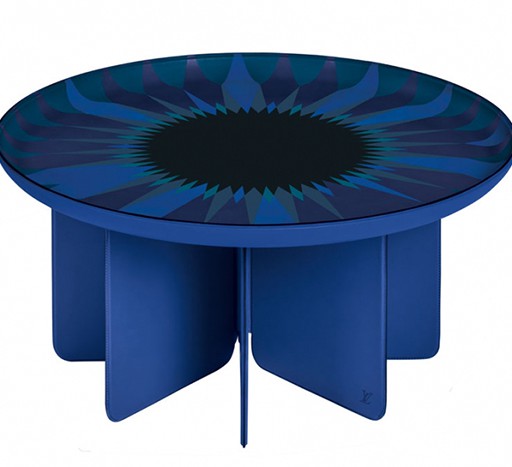The image of mobile prefabricated houses as cheap and low-quality constructions is a thing of the past. Technical innovations in recent years, such as industrialization, have made this option a sustainable alternative accessible to all budgets.
Mobile prefabricated houses are also perfect for a time when remote work is constantly expanding: the possibility of a nomadic life for those who have already embraced this work mode has spiked interest in this type of accommodation.
In this report, we will tell you about the advantages and disadvantages of this residential solution, explain the necessary procedures if you wish to join this trend, and, of course, show you our favorite mobile prefabricated homes, some at very affordable prices.
Ver esta publicación en Instagram
Mobile prefabricated houses: what are their features?
What is a mobile prefabricated house? It is a dry-constructed dwelling, built before being located at the construction site, which can also be moved with the help of a trailer, without needing to be disassembled. Unlike other modular houses, they do not require a foundation or a construction license (for this reason, they are considered movable goods and regulated by Article 335 of the Civil Code and the UNE-EN 1647 standard), which means fewer bureaucratic and technical requirements. However, we recommend consulting with local entities, in case there might be any issues in the general urban planning affecting the installation of the mobile home.
Necessary procedures
What, then, are the essential procedures? Although the process is much simpler, like caravans or construction huts, there are certain habitability conditions and municipal ordinances that must not be overlooked. These are:
- Like caravans and construction huts, urban planning authorization is required.
- If the home is located on rustic land, that is, land classified as non-developable, the regulations of each autonomous community must be consulted.
- It is important to consider how the home will obtain basic supplies. Ideally, these constructions should be self-sufficient, although there is always the possibility of connecting to the network of an enabled enclosure, such as a caravan park or a camping site. If supplies are required from the municipality, the procedures will be the same as for a real property.
Advantages and disadvantages
This type of construction has many advantages: we have already talked about the freedom of being able to move without leaving the comforts of your home, or the reduction of procedures, in addition to the energy efficiency with which they are being designed in recent years, benefiting both owners and the environment. From Tyrone Woods Manufactured Home Community, a community specializing in the sale of prefabricated homes, they provide the keys to optimizing these constructions:
- Use insulating materials for floors, walls, ceilings, and baseboards (by adding safe and environmentally friendly insulation, the general energy use of the house decreases by up to 31%).
- LED lighting, which consumes 80 or 90% less electricity than traditional bulbs.
- Recycled or residual materials.
- Use of renewable energy sources: geothermal heat pumps, solar panels, water heaters, and wind electrical systems.
Ver esta publicación en Instagram
Despite all these advantages, it is also worth mentioning certain disadvantages:
- Size. Due to their mobile condition, the size of these constructions cannot be too large or have a second floor, which would complicate their movement. For this reason, they are usually composed of only one module, although additional complementary ones can be added if other needs arise.
- Special transportation for relocation. Despite being a mobile home, it must be noted that its relocation must be carried out with specialized vehicles. For this, the homes must have wheels, a reinforced chassis, and a towing bar.
- Impossibility of a mortgage. Given their consideration as movable goods, it is not possible to request a mortgage, only a personal loan, which implies much less favorable payment conditions.
Prices and durability
Mobile prefabricated houses are more affordable than traditional houses, as the lack of foundation significantly reduces their price, even compared to prefabricated houses.
Not including the land or expenses related to procedures, supplies, and taxes, the price of one of these homes varies from about 4,000 euros (10 m²) to 40,000 euros (100 m²). The price also varies depending on the materials and equipment.
The average lifespan of these houses is between 15 and 20 years, but with proper maintenance, they can last up to about 40 years. This leads to the offering of mobile prefabricated houses in the second-hand market. It should be noted that while the sale of prefabricated homes also involves the purchase of land, mobile prefabricated homes offer much more freedom to the buyer, as they can move the home to the land of their choice.
Case studies of mobile prefabricated houses
The possibility of taking your home with you allows for imagining a multitude of options. From architecture, this versatility has been taken advantage of to design the most daring projects. In addition to the examples we have already provided in the post Would you live in these mobile homes? here we show you four more designs that have caught our attention:
Jean Prouvé’s demountable house:
We start this list with a home that is already part of the history of architecture. In 1962, architect Jean Prouvé designed this prefabricated and demountable home, with a functional and refined language, typical of his architectural style. Prouvé advocated a design in which all elements could be mass-produced, without the need for customized and individualized construction, greatly reducing costs. This is the beginning of industrialized construction. This design was conceived during World War II to rehouse refugees from villages destroyed by bombs. In 2020, converted into an icon of modern architecture, this home was put up for sale by Espaces Atypiques with a starting cost of 1,715,000 euros. Don’t worry, now we will show you other mobile demountable homes at much more affordable prices.
Ver esta publicación en Instagram
Treehouse cabin
This Trunk Bunk prototype, devised by Henry K. Wein, takes us directly to childhood memories, to the dream of building a treehouse that we can also transport from one place to another. Made with lightweight and reused materials (like an old shutter used as cladding), this foldable habitat is so manageable that it can even be transported by bicycle. A system of straps and pulleys allows it to be easily installed and uninstalled in the tree of our choice and return, for a few hours, to the adventures of our childhood.
Ver esta publicación en Instagram
Zomes’ mini-home
Characterized by its resistance to extreme climatic factors and its affordable price (below 33,000 euros), this home also has a very reduced environmental impact. It is built with ecological materials that are 90% recyclable, and its inventors claim it can last up to 100 years. Its design is reminiscent of Mongolian yurts, not only for its peculiar rounded shape but also for its ability to be disassembled without damaging the land. Zomes’ mini-homes are not transported assembled, but rather disassembled to be placed again in another location.
Ver esta publicación en Instagram
Ágora Arquitectura’s shelter
Conceived as a weekend retreat, this Spanish studio based in Barcelona offers the possibility of transporting this prefabricated house by truck and locating it without any assembly. Made of wood and with insulating materials that guarantee waterproofing, this construction also has double glazing and a cross ventilation system that provide great energy efficiency. Ideally, it should be installed facing south, to make the most of daylight hours, and placed in rural environments, to blend in with the surroundings.
Ver esta publicación en Instagram
Whether we choose this type of space or not, it is interesting to consider new ways of building and interacting with our environment. Mobile prefabricated homes settle non-aggressively, guarantee energy efficiency, and, above all, give us the opportunity to return to being nomads, without giving up any of the advantages of home, which will always travel with us.




